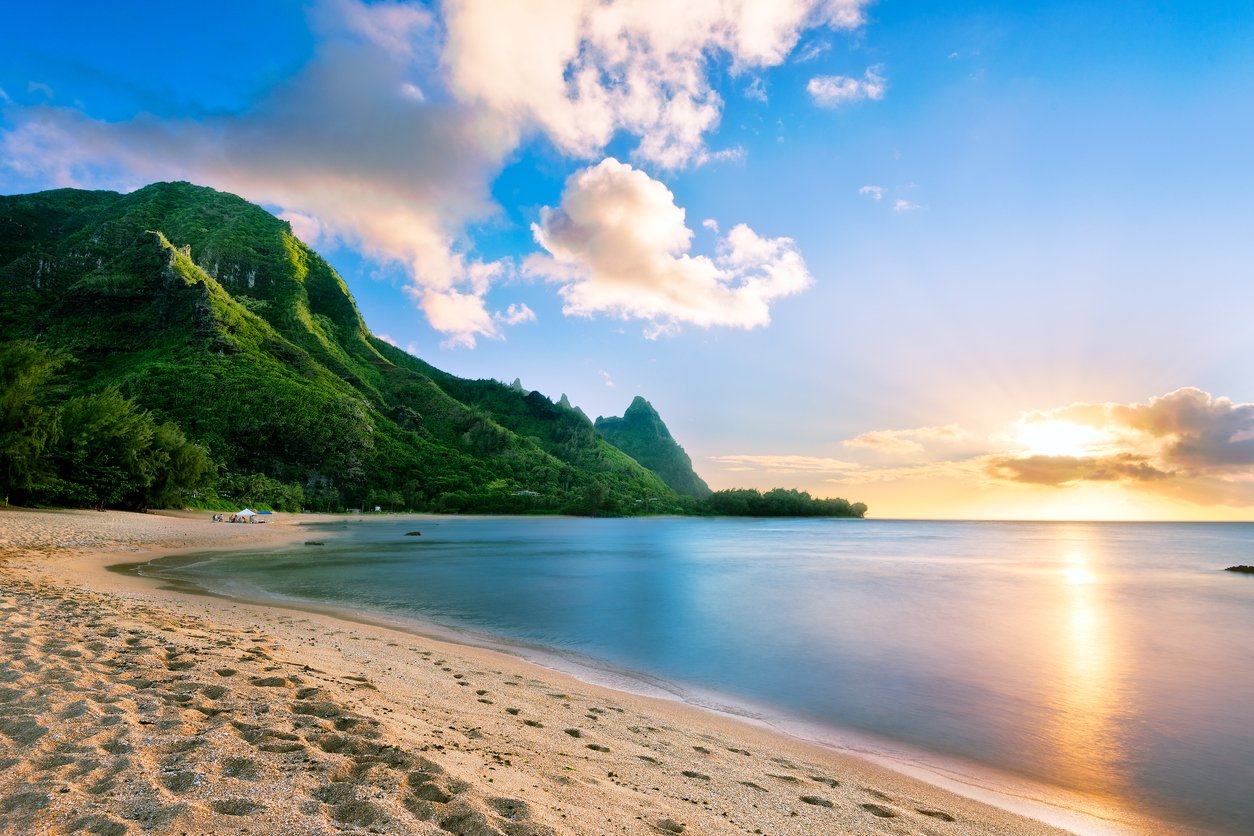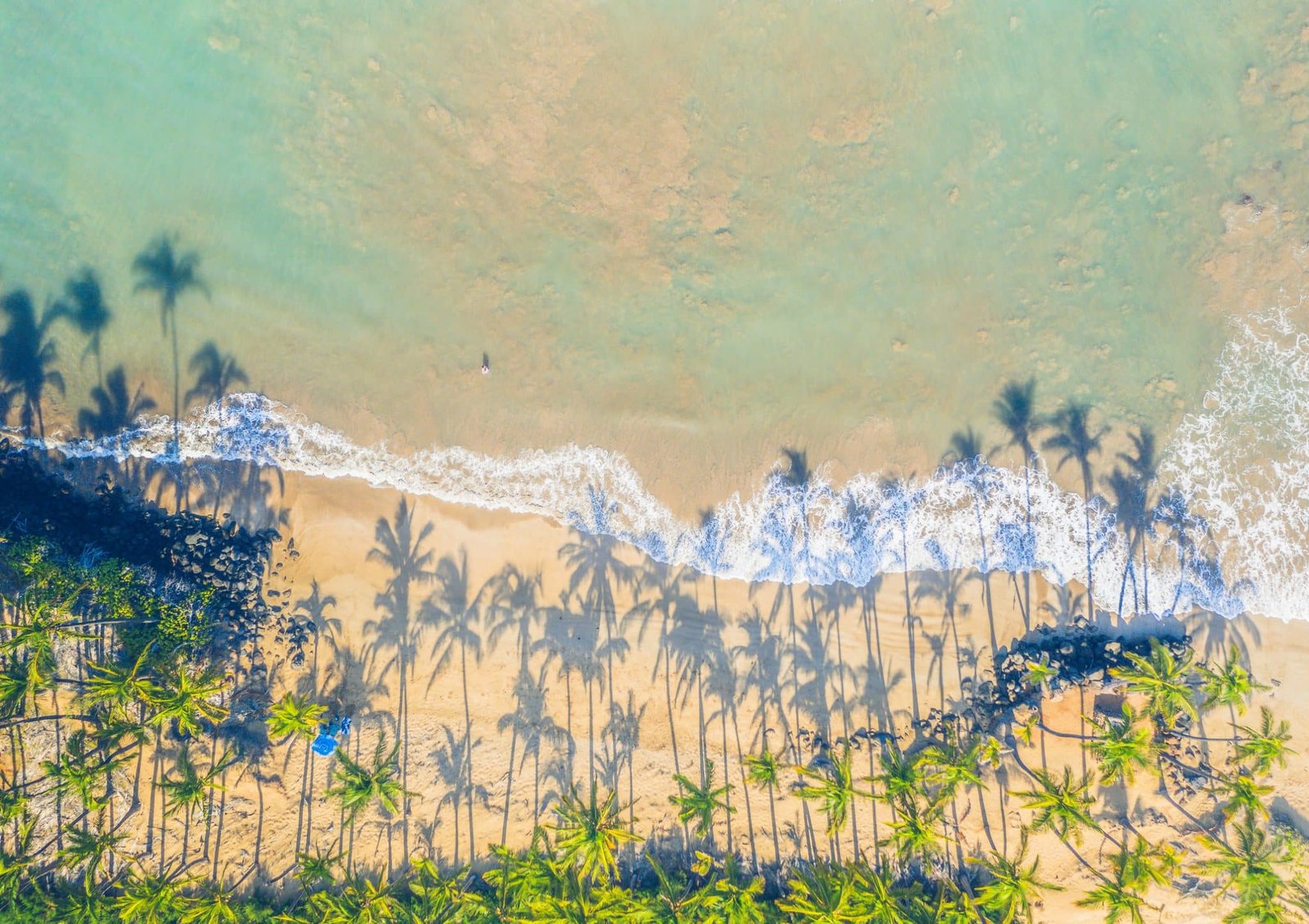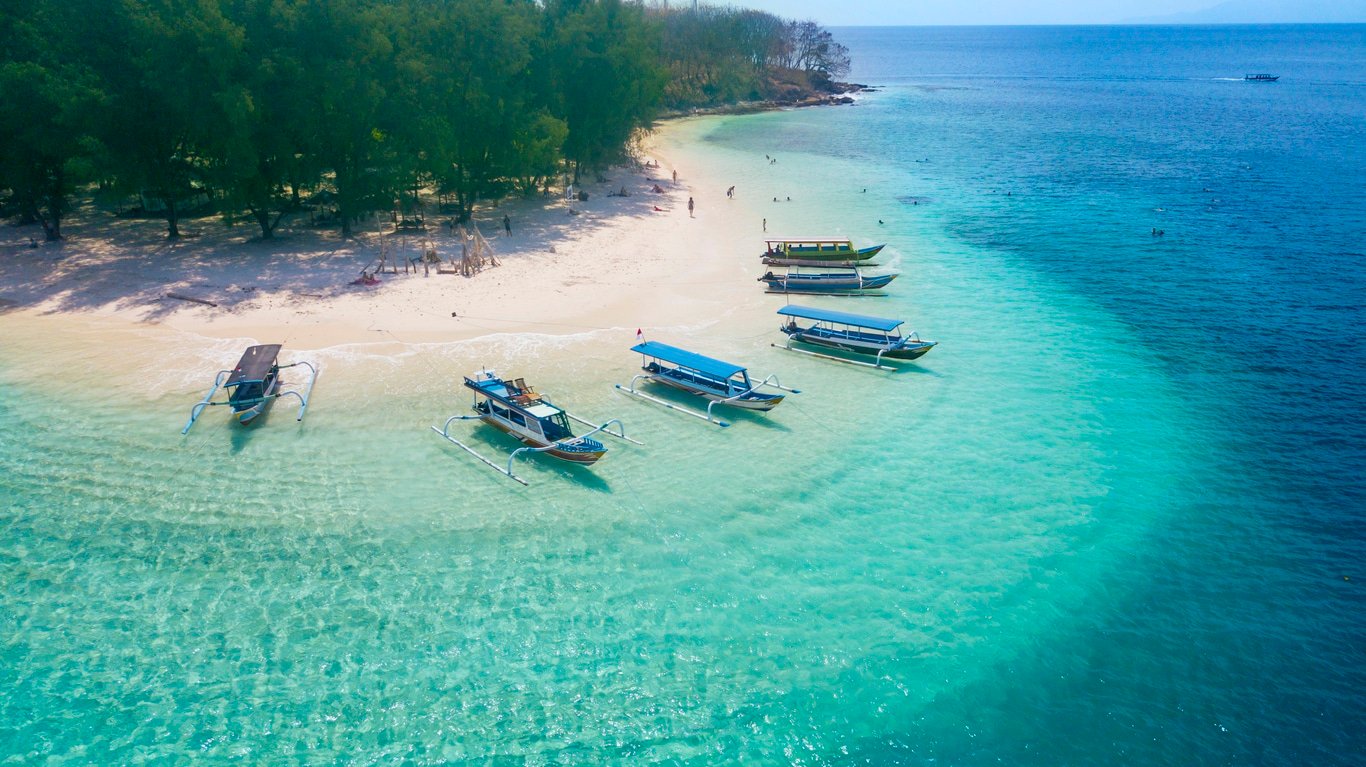The Most Beautiful & Rare Birds of Oahu: Where to Find Them, Photos & More!
Oahu is home to over 200 species of bird at any given time, with 16 native birds spread throughout the island’s dense forests, wild shorelines, and volcanic mountain ranges.
All of the birds on Oahu are beautiful in some way, and each will bring a sense of joy as you spot them on your birdwatching adventure. Many are plentiful, while some are going to require an adventurous hike into the wilderness to find. It’s all part of the fun though!
Because Oahu is very small and many of the birds are available year-round, you’ll be sure to spot a massive range of birds no matter where you go on the island. However, if you’re looking for specific birds, we providing the details below so you have the best chance to spot your favorite birds in Oahu.
Below we share with you some of the most beautiful birds on Oahu to look out for. Then we introduce some of the rarest birds on this island, followed by a few more of Oahu’s endemic birds!
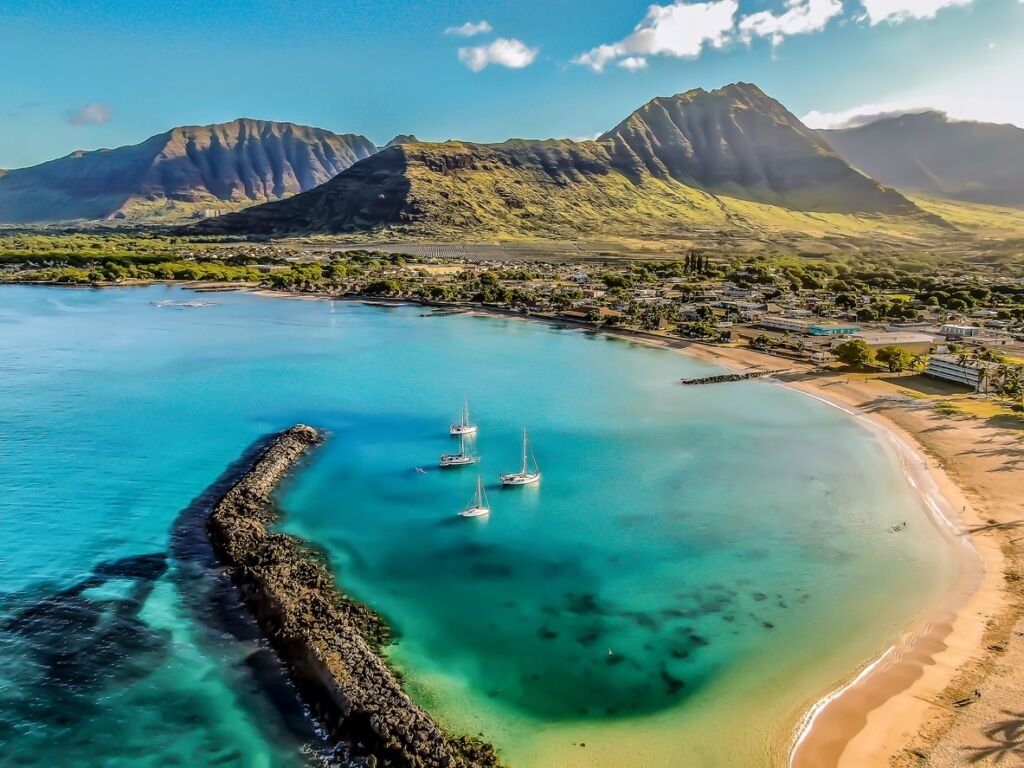
Oahu’s Most Beautiful Birds
Many of the most beautiful birds on Oahu are endemic to Hawaii and even Oahu. Unfortunately, several are threatened due to habitat destruction and avian malaria, which is wiping many species out.
You may need to hike into some of the more remote forests to have a chance to see some of the truly beautiful birds of Oahu.
1. I’iwi (Scarlet Honeycreeper)
The I’iwi is one of the most well-known symbols of Hawaii thanks to its beautiful scarlet feathers with striking black wings and tail. It can reach around 6 inches in length. In addition, it has a long hook-shaped beak that is used to drink nectar from flowers.
I’iwi are considered one of the rarest birds on Oahu, and unfortunately it’s expected that they will disappear within the next few years. They were historically captured for their beautiful scarlet feathers used in traditional clothing, and more were lost due to pests during the 1800s.
It’s very rare to see them, with around 50 still thought to be living in the north-eastern forests of Koolau and Waianae. Though this number could be less now as they’re challenging to find and track.
Habitat
I’iwi prefer higher elevations in wet forests, such as Oahu’s Koolau and Waianae forests. You will be unlikely to spot these birds anywhere else on Oahu. However they are present on many of the other Hawaiian islands, such as the eastern forests of Maui.
Endangered Status
Overall, the I’iwi are considered vulnerable and can only be found on some Hawaiian islands. But they are considered critically threatened on Oahu.

2. Red-Cheeked Cordon-bleu
The Red-cheeked Cordon-bleu is a smaller bird measuring 5 inches long and weighing only 0.35 oz. Its name describes it well as while it has light brown upper feathers, its under feathers are blue (often pale blue) with a yellow belly and red patches on each cheek.
It was first introduced to Hawaii and Oahu in the 1960s but hasn’t gained a strong foothold in the region.
Habitat
The Red-Cheeked Cordon-bleu population is centered around Diamond Head on the southern tip of Oahu. They can be found throughout all areas except within forest regions. Due to the small population size, you’ll need to be on the lookout for it specifically.
Endangered Status
The Red-Cheeked Cordon-bleu is an introduced species and not endangered throughout the world. However, the population in Oahu is extremely small and lives in a specific area with limited sightings.
It’s estimated that there are under 20 birds in the region and they may disappear from the island completely unless they can find a way to survive without human feeding.

3. Indian Peafowl
Indian Peafowl were introduced to Hawaii in the 1860s and have been thriving since then. They’re a magnificent bird, and the males can put on an immense display with their tails; most people are familiar with their other name – the Peacock!
The Peacock has a sapphire or blue colored head, neck, and under feathers, with golden yellow to green upper feathers. Its tail can spread to around 2 meters long when on display. They can grow to approximately 45 inches long and weigh up to 8.8 lbs.
Habitat
Indian Peafowls can be found in various locations, including in urban areas of Oahu; however, you’re most likely to see them in Malaekahana State Recreation Area and Waimea Valley.
You can also see them at the Honolulu Zoo or Ho‘omaluhia Botanical Gardens, although that’s not quite the same as finding them in the wild.
Endangered Status
Indian Peafowls are common throughout Asia and are a protected species in India. They’re a common sight in Oahu though exact numbers of wild Indian Peafowl are not readily available.

4. Red-Billed Leiothrix
The Red-Billed Leiothrix was introduced in 1918 and is now a very common bird to see around Oahu. It has a distinctive bright red bill (or beak), and it’s mostly olive green with yellow or orange around its breast. The tips of its wing are brightly colored with yellow, orange, and red. It’s around 6 inches long and can weigh up to 0.88 oz.
It’s an extremely loud bird that you will often hear before you see it! And it’s not afraid to let you know if you’ve entered its territory. However they’re friendly, often live in groups of 30 or more, and are even monogamous.
Habitat
This bird prefers the underbrush in all forest types, including native and exotic, and can be found at all elevations. So you’re likely to see one of these birds no matter where you go. They are also known to visit urban areas but don’t live there.
Endangered Status
The Red-Billed Leiothrix is not endangered and it’s common throughout many parts of Asia. While there was a significant loss of the population during the 1960s in Oahu, the species has bounced back to become extremely common throughout the island.

5. Great Frigatebird (`Iwi)
The Great Frigatebird or `Iwi has a similar meaning in both languages – it’s known to be and was initially observed as a thief of food from other seabirds!
It’s a large black bird with a forked tail and can grow to 42 inches long with a wingspan of 91 inches and weigh up to 3.5 lbs.
One of the most interesting things about the Frigatebird is that males have a large red gular sac that can inflate when looking for a mate and can also be used to store fish. In contrast, the female has a white gular sac that can’t grow.
Habitat
Frigatebirds are large seabirds that nest in coastal regions around Oahu and other Hawaiian islands. The best place to spot Great Frigatebirds fishing is at Makapu’u Point, which is the easternmost point of Oahu and is around 12 miles from Honolulu.
Endangered Status
Great Frigatebirds are not endangered as they can be found throughout the Pacific islands. Hawaii has an estimated 10,000 birds living throughout all of the islands.
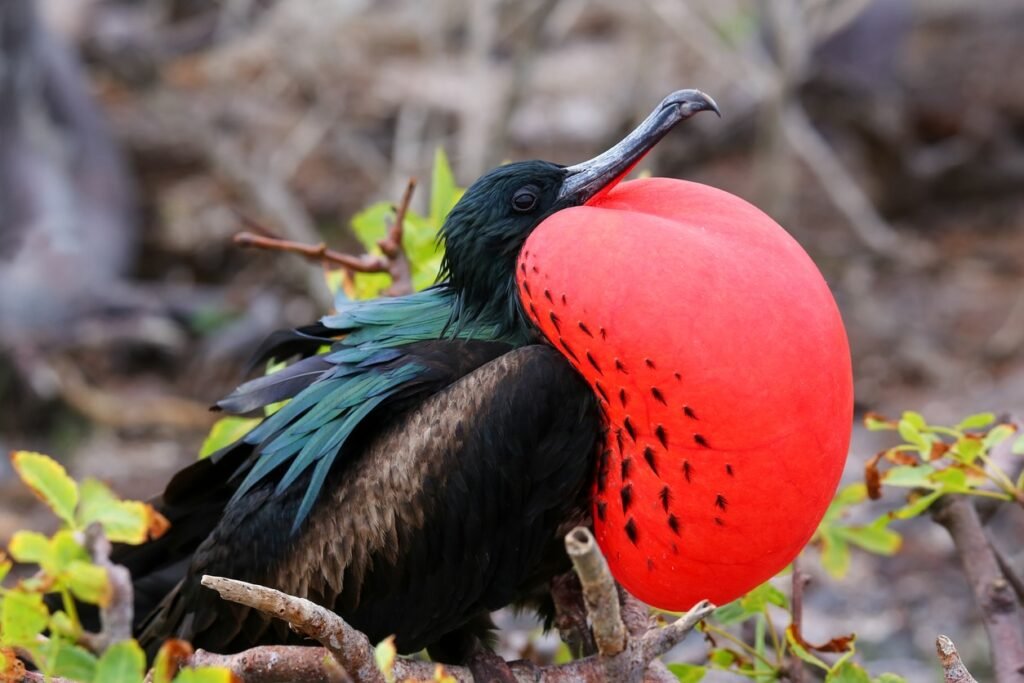
Oahu’s Rarest Birds
1. Hawaiian Black-Necked Stilt (Aeʻo)
Hawaiian Black-Necked Stilts have very long legs compared to their relatively small bodies. They are black on their tops with a white underbody and salmon-colored legs. They have a long straight black beak, and they can grow to around 15 inches long and weigh up to 6 oz.
They’re happy to be in freshwater or saltwater but don’t go swimming! They simply wade through shallow water while hunting for food.
The Hawaiian Black-Necked Stilt is considered at least a sub-species of the Black-Necked Stilt found throughout the rest of the Americas. It has distinctive color differences not found anywhere else.
Habitat
The Hawaiian Black-Necked Stilt can be seen throughout Maui in wetlands near the beaches and ponds or marshes, all at low elevation levels. Anywhere with shallow water close to the beach can have Hawaiian Stilts wading around looking for food.
Your best chances for seeing it on Oahu are Hamakua Marsh, James Campbell Wildlife Refuge, and the Pearl Harbor National Wildlife Refuge.
Endangered Status
Hawaiian Black-Necked Stilts are only found on the Hawaiian islands. They are considered imperiled, with around 1,100 – 2,000 left in Hawaii.

3. Oʻahu ʻalauahio
The Oʻahu ʻalauahio is a Hawaiian honeycreeper species that is only found on Oahu. It’s green on its back, tail, and upper head. While the rest of its body is yellow, its face is a much brighter yellow than the rest of its body. It can grow to 4 inches long and weigh around 0.45 oz, but some believe this bird is already extinct.
The Oahu `alauahio strongly resembles the Oʻahu ʻamakihi, and casual observations can confuse the two, especially as they share habitats.
Habitat
It’s believed that any Oahu `alauahio that still exist may be in the southern wet forests of Oahu, specifically the Honouliuli Reserve and the Wa’ahila Ridge State Recreation Area.
Endangered Status
The species is considered critically endangered, but many believe it may now be extinct. However due to the small numbers (possibly only 5-10 remain), it’s hard to tell until time passes and nobody sees them anymore.
Highway construction destroyed one of the species’ last strongholds, which was unfortunately specially approved to bypass endangered species laws.
4. O`ahu `elepaio
The O`ahu `elepaio is a small forest bird, growing up to 6 inches long and weighing 0.4 oz. It has brown-rusty upper feathers with a whiter underbody. Its tail tip and wingtips are white, and while it’s related to other `elepaio around Hawaii, the O`ahu `elepaio has a more rusty colored head than other similar species.
While the Oahu `elepaio species has a stable population, that population is growing in some areas while disappearing in others, and some valleys are believed to only have a single bird left.
Habitat
O`ahu `elepaio can be found in a tiny area of Oahu, around 18 square miles within the Koʻolau and Waiʻanae ranges on the eastern side of the island. You will need to trek into the wilderness to see this bird.
Endangered Status
Oahu Elepaio are considered endangered. They can only be found on Oahu with a population of around 1,200 – 1,400 birds. However, the species has remained stable since the 1990s with no further loss, but also no growth in their population.
It’s expected that without intervention, the species may die out as it becomes confined to smaller and smaller areas.

Oahu’s Other Endemic Birds
There were 71 known endemic birds in Hawaii, with some specific to Oahu. However many have since gone extinct, and there are currently 48 endemic birds throughout all of Hawaii, with 16 still on Oahu. (Related: The Most Beautiful Birds of Kauai).
1. ʻApapane
The `Apapane is a blood-red or crimson honeycreeper. It’s small, growing to 5 inches long, and weighs 0.55 oz. They’re mostly a crimson color with white under their tail and lower abdomen. They also have some black on their wingtips.
The primary food source for `Apapane is nectar, though if that is not readily available, they will eat spiders and small insects.
‘Apapane are one of the few honeycreepers that have a resistance to avian malaria, which is forcing other birds into extinction, or at least making them live at higher elevations.
Habitat
You will find them mostly above 600 meters in the Wai’anae Range (see photo below), though they will come lower if feeding requires it. They will be found high in the canopy of native forests.
Endangered Status
‘Apapane are not considered endangered but can’t be found outside of Hawaii. There are around 24,000 of them spread throughout Oahu.

2. Laysan Albatross
Laysan Albatross are one of the smaller Albatrosses but are still a large bird overall. They grow up to 32 inches long, with an 80-inch wingspan, and weigh up to 9.5 lbs, and have white heads and stomachs, white underwings with black or brown streaks. Their upper wings and back are dark grey or brown.
They often sit on the water waiting for their prey, and will scoop up squid and other small marine animals that come to the surface.
While they spend most of their time on the open water, they do nest in grassy regions throughout the Hawaiian islands.
Habitat
You can find the Laysan Albatross nesting on the North Shore at Kaena Point Natural Area Reserve. Oahu has smaller numbers than other areas of Hawaii, such as Midway Atoll.
Endangered Status
The Laysan Albatross is considered near threatened, though there is a population of around 2.5 million throughout the Hawaiian Islands, and their population is starting to expand again. They may also be expanding their range outside of Hawaii, though in very small numbers.

3. O`ahu ʻamakihi
The O`ahu ʻamakihi is potentially the last endemic honeycreeper species and can be found in all forests throughout Oahu, including dry forests and wet forests.
It’s a yellow-green bird all over with a small black beak. Its upper feathers are more green-tinged than its lower yellow-tinged feathers and it can grow to around 4 inches long and weigh up to 0.45 oz.
It’s unfazed by habitat destruction and continues to modify where it lives and feeds as needed. It’s also becoming resistant to avian malaria which is killing off many bird species on Oahu.
This species has an extended breeding season of nine months and can have two sets of chicks during that breeding season. All of which has helped population growth.
Habitat
The O`ahu ʻamakihi can be found in most forests throughout Oahu. However, the most significant concentration is in the southern wet forests near the Honouliuli Reserve and the Wa’ahila Ridge State Recreation Area.
It has started to adapt to non-native forests and continues to expand as its original habitat gets destroyed or grows smaller due to development.
Endangered Status
The O`ahu `amakihi is currently listed as vulnerable. Still, it’s showing significant population growth as it appears to adapt to changing habitats and has a resistance to avian malaria that threatens other honeycreepers.

4. Hawaiian Coot (‘alae ke‘oke‘o)
The Hawaiian Coot is mostly black with a large white frontal shield on its forehead and a short white beak. It can grow to be 16 inches long and weigh up to 1.5 lbs.
It will build floating nests in almost any kind of standing water, including sewage treatment ponds, taro fields, and anywhere else it can find.
Habitat
It prefers freshwater lakes, marshes, lagoons, and man-made water storage areas. Your best chance for seeing one is by visiting Kawainui, as well as James Campbell and Pearl Harbor National Wildlife Refuges.
Endangered Status
The Hawaiian Coot is considered vulnerable. It’s endemic to the Hawaiian islands, and there’s estimated to be 1,500 – 4,000 spread throughout all of Hawaii. The most significant factor in their decline is habitat loss and introduced species like the mongoose.




